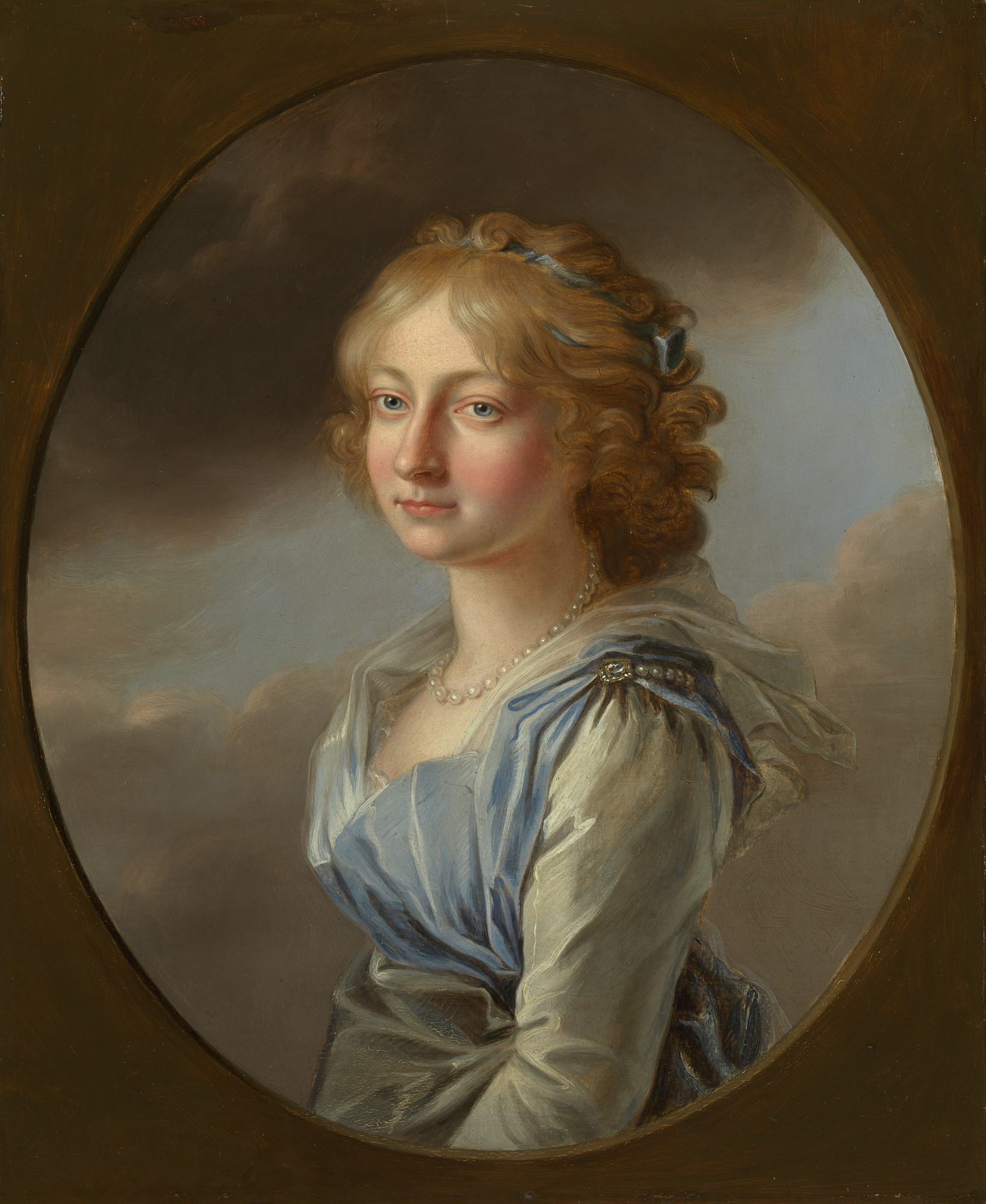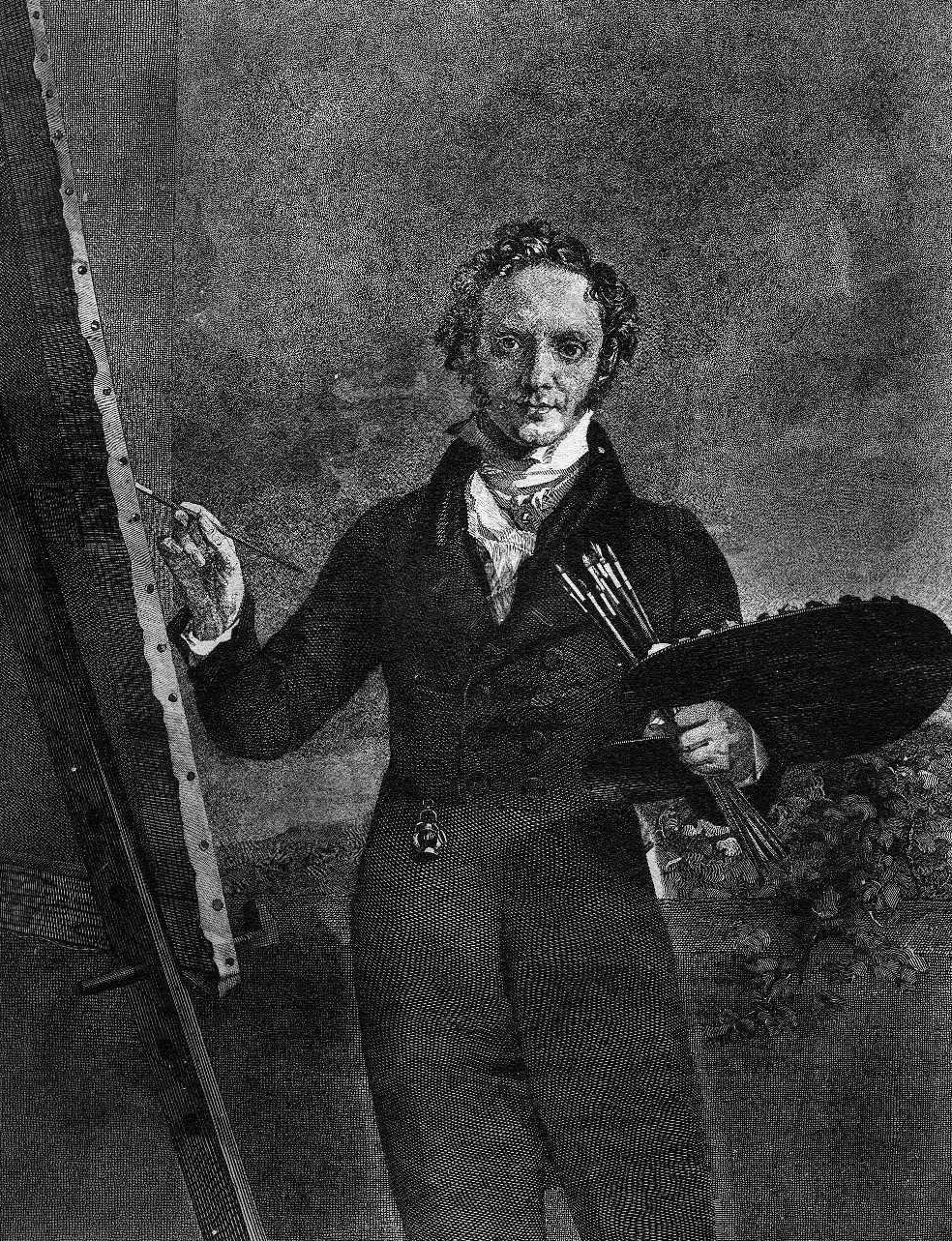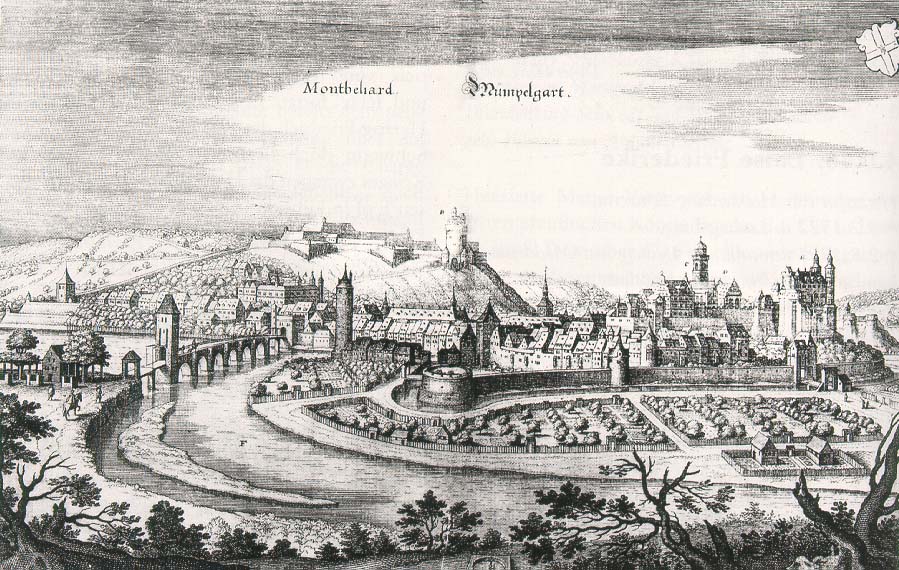|
Duke Alexander Of Württemberg (1771–1833)
Duke Alexander of Württemberg (Mömpelgard/Montbéliard, then Württemberg (now France); 24 April 1771 – 4 July 1833, in Gotha, Thuringia, Germany)p.448, Mikaberidze was a Duke of Württemberg. The son of Frederick II Eugene, Duke of Württemberg and of Sophia Dorothea of Brandenburg-Schwedt. His sister Sophie Dorothea married Tsar Paul I of Russia. Family In 1798 he married Antoinette of Saxe-Coburg-Saalfeld (1779 - 1824). They had five children: * Marie of Württemberg (1799–1860), who in 1832 married Ernest I of Saxe-Coburg-Gotha. * Paul of Württemberg (1800–1801) * Alexander of Württemberg (1804-1881), Duke of Württemberg * Ernest of Württemberg (1807–1868), Duke of Württemberg, who in 1860 married Nathalie Eschborn, later ennobled as "von Grünhof" (1829–1905) : ** Alexandra Nathalie Ernestine von Grünhof (Wiesbaden, 10 August 1861 - Hohenlübbichow, 13 April 1933), who in 1883 married Robert von Keudell * Friedrich Wilhelm Ferdinand of Württemberg (S ... [...More Info...] [...Related Items...] OR: [Wikipedia] [Google] [Baidu] |
George Dawe
George Dawe (6 February 1781 – 15 October 1829) was an English portraitist who painted 329 portraits of Russian generals active during Napoleon's invasion of Russia for the Military Gallery of the Winter Palace. He relocated to Saint Petersburg in 1819, where he won acclaim for his work from the artistic establishment and complimentary verses by Pushkin. He was the son of Philip Dawe, a successful mezzotint engraver who also produced political cartoons relating to the events of the Boston Tea Party. One of his brothers was Henry Edward Dawe, also a portraitist. He died on 15 October 1829 in Kentish Town, United Kingdom. Life and career Early life and studies George Dawe was born on 6 February 1781 to Philip Dawe and Jane in Brewer Street, in the parish of St James's in Westminster. Philip was an artist and engraver in mezzotint who had worked with Hogarth and Joseph Mallord William Turner and who also produced satirical political cartoons about life in America which are ... [...More Info...] [...Related Items...] OR: [Wikipedia] [Google] [Baidu] |
House Of Württemberg
The House of Württemberg is a German dynasty and former royal family from Württemberg. History County The House probably originated in the vicinity of the Salian dynasty. Around 1080 the ancestors of modern Württemberg, which was then called "Wirtemberg", settled in the Stuttgart area. Conrad of Württemberg became heir to the House of Beutelsbach and built the Wirtemberg Castle. Around 1089, he was made Count. Their domains, initially only the immediate surroundings of the castle included, increased steadily, mainly through acquisitions such as those from impoverished homes of Tübingen. Duchy At the Diet of Worms in 1495, Count Eberhard V was raised to Duke (''Herzog'') by the German King, later Holy Roman Emperor, Maximilian I. During 1534 to 1537 Duke Ulrich introduced the Protestant Reformation, and the country became Protestant. Duke Ulrich became head of the local Protestant Church. In the 18th Century, the Protestant male line became extinct, the Head of the Ho ... [...More Info...] [...Related Items...] OR: [Wikipedia] [Google] [Baidu] |
Robert Von Keudell
Robert von Keudell (27 February 1824 - April 25/26 1903) was a German diplomat, politician and music lover. Life Von Keudell's parents were the Prussian major Leopold von Keudell (1769-1831) and his wife Wilhelmine von Hartmann (1789-1848). He was born in Königsberg. Keudell studied law at the Albertina University in Königsberg. Keudell was an excellent pianist and admirer of Robert Schumann, with whom he corresponded from 1847 to 1853. His two wives were also talented pianists. His second wife played with Joseph Joachim Joseph Joachim (28 June 1831 – 15 August 1907) was a Hungarian violinist, conductor, composer and teacher who made an international career, based in Hanover and Berlin. A close collaborator of Johannes Brahms, he is widely regarded as one of t ... and Anton Rubinstein, among others. In 1839-1840 he had become acquainted with Fanny Mendelssohn, Fanny Hensel in Italy and had encouraged her composition. From 1872 to 1873 he was German envoy at the Sublime P ... [...More Info...] [...Related Items...] OR: [Wikipedia] [Google] [Baidu] |
Lubiechów Górny
Lubiechów Górny (german: Hohen Lübbichow) is a village in the administrative district of Gmina Cedynia, within Gryfino County, West Pomeranian Voivodeship, in north-western Poland, close to the German border. It lies approximately north-east of Cedynia, south-west of Gryfino, and south-west of the regional capital Szczecin. For the history of the region, see History of Pomerania The history of Pomerania starts shortly before 1000 AD with ongoing conquests by newly arrived Polans rulers. Before that, the area was recorded nearly 2000 years ago as Germania, and in modern-day times Pomerania is split between Germany and Pol .... References Villages in Gryfino County {{Gryfino-geo-stub ... [...More Info...] [...Related Items...] OR: [Wikipedia] [Google] [Baidu] |
Wiesbaden
Wiesbaden () is a city in central western Germany and the capital of the state of Hesse. , it had 290,955 inhabitants, plus approximately 21,000 United States citizens (mostly associated with the United States Army). The Wiesbaden urban area is home to approximately 560,000 people. Wiesbaden is the second-largest city in Hesse after Frankfurt, Frankfurt am Main. The city, together with nearby Frankfurt am Main, Darmstadt, and Mainz, is part of the Frankfurt Rhine Main Region, a metropolitan area with a combined population of about 5.8 million people. Wiesbaden is one of the oldest spa towns in Europe. Its name translates to "meadow baths", a reference to its famed hot springs. It is also internationally famous for its architecture and climate—it is also called the "Nice of the North" in reference to the city in France. At one time, Wiesbaden had 26 hot springs. , fourteen of the springs are still flowing. In 1970, the town hosted the tenth ''Hessentag Landesfest'' (En ... [...More Info...] [...Related Items...] OR: [Wikipedia] [Google] [Baidu] |
Ernest I, Duke Of Saxe-Coburg And Gotha
Ernest I (german: Ernst Anton Karl Ludwig; 2 January 178429 January 1844) was the last sovereign duke of Saxe-Coburg-Saalfeld (as Ernest III) and, from 1826, the first sovereign duke of Saxe-Coburg and Gotha (as Ernest I). He was the father of Albert, Prince Consort, who was the husband of Queen Victoria. Ernest fought against Napoleon Bonaparte, and through construction projects and the establishment of a court theatre, he left a strong imprint on his residence town, Coburg. Early life Ernest was born on 2 January 1784. He is the eldest son of Francis, Duke of Saxe-Coburg-Saalfeld, and Countess Augusta of Reuss-Ebersdorf. His youngest brother, Leopold Georg Christian Frederick, was later elected the first King of the Belgians. On 10 May 1803, aged 19, Ernest was proclaimed an adult because his father had become gravely ill, and he was required to take part in the government of the duchy. When his father died in 1806, he succeeded in the duchy of Saxe-Coburg-Saalfeld as Ernes ... [...More Info...] [...Related Items...] OR: [Wikipedia] [Google] [Baidu] |
Paul I Of Russia
Paul I (russian: Па́вел I Петро́вич ; – ) was Emperor of Russia from 1796 until his assassination. Officially, he was the only son of Peter III of Russia, Peter III and Catherine the Great, although Catherine hinted that he was fathered by her lover Sergei Saltykov.Aleksandr Kamenskii, ''The Russian Empire in the Eighteenth Century: Searching for a Place in the World'' (1997) pp 265–280. Paul remained overshadowed by his mother for most of his life. He adopted the Pauline Laws, laws of succession to the Russian throne—rules that lasted until the end of the Romanov dynasty and of the Russian Empire. He also intervened in the French Revolutionary Wars and, toward the end of his reign, added Kingdom of Kartli-Kakheti, Kartli and Kakheti in Eastern Georgia into the empire, which was confirmed by his son and successor Alexander I of Russia, Alexander I. He was ''de facto'' Grand Master (order), Grand Master of the Knights Hospitaller, Order of Hospitallers from ... [...More Info...] [...Related Items...] OR: [Wikipedia] [Google] [Baidu] |
Maria Feodorovna (Sophie Dorothea Of Württemberg)
Maria Feodorovna (russian: Мария Фёдоровна; née Duchess Sophie Dorothea of Württemberg; 25 October 1759 – 5 November 1828 S 24 October became Empress consort of Russia as the second wife of Emperor Paul I. She founded the Office of the Institutions of Empress Maria. Daughter of Duke Frederick Eugene of Württemberg and Princess Friederike of Brandenburg-Schwedt, Sophie Dorothea belonged to a junior branch of the House of Württemberg and grew up in Montbéliard, receiving an excellent education for her time. After Grand Duke Paul (the future Paul I of Russia) became a widower in 1776, King Frederick II of Prussia (Sophie Dorothea's maternal great-uncle) and Empress Catherine II of Russia chose Sophie Dorothea as the ideal candidate to become Paul's second wife. In spite of her fiancé's difficult character, she developed a long, peaceful relationship with Paul and converted to the Russian Orthodox Church in 1776, adopting the name ''Maria Feodorovna''. During ... [...More Info...] [...Related Items...] OR: [Wikipedia] [Google] [Baidu] |
Margravine Friederike Of Brandenburg-Schwedt
Friederike of Brandenburg-Schwedt (Friederike Sophia Dorothea; 18 December 1736 – 9 March 1798) was Duchess of Württemberg by marriage to Frederick II Eugene, Duke of Württemberg. She is an ancestor to many European royals of the 19th and 20th century. Biography Friederike was a daughter of Margrave Frederick William of Brandenburg-Schwedt and Princess Sophia Dorothea of Prussia. Her mother was a sister of Frederick the Great. Her siblings included Elisabeth Louise, Princess Augustus Ferdinand of Prussia and Philippine, Landgravine of Hesse-Cassel. On 2 November 1753, she married Frederick Eugen of Württemberg. He would succeed his brother in 1795, making her Duchess consort of Württemberg. Friederike was described as witty and charming. She belonged to the reformed faith, while her husband was Catholic; however, she brought up her children as Lutheran upon agreement with the Lutheran council, from whom she received an allowance. From 1769, she lived at Montbélia ... [...More Info...] [...Related Items...] OR: [Wikipedia] [Google] [Baidu] |
Duke Of Württemberg
Duke is a male title either of a monarch ruling over a duchy, or of a member of royalty, or nobility. As rulers, dukes are ranked below emperors, kings, grand princes, grand dukes, and sovereign princes. As royalty or nobility, they are ranked below princess nobility and grand dukes. The title comes from French ''duc'', itself from the Latin ''dux'', 'leader', a term used in republican Rome to refer to a military commander without an official rank (particularly one of Germanic or Celtic origin), and later coming to mean the leading military commander of a province. In most countries, the word ''duchess'' is the female equivalent. Following the reforms of the emperor Diocletian (which separated the civilian and military administrations of the Roman provinces), a ''dux'' became the military commander in each province. The title ''dux'', Hellenised to ''doux'', survived in the Eastern Roman Empire where it continued in several contexts, signifying a rank equivalent to a captain ... [...More Info...] [...Related Items...] OR: [Wikipedia] [Google] [Baidu] |
Montbéliard
Montbéliard (; traditional ) is a town in the Doubs Departments of France, department in the Bourgogne-Franche-Comté Regions of France, region in eastern France, about from the border with Switzerland. It is one of the two Subprefectures in France, subprefectures of the department. History Montbéliard is mentioned as early as 983 as . The County of Montbéliard or Mömpelgard was a feudal Graf, county of the Holy Roman Empire from 1033 to 1796. In 1283, it was granted rights under charter by Count Reginald of Burgundy, Reginald. Its charter guaranteed the county perpetual liberties and franchises which lasted until the French Revolution in 1789. Montbéliard's original municipal institutions included the Magistracy of the Nine Bourgeois, the Corp of the Eighteen and the Notables, a Mayor, and Procurator, and appointed "Chazes", all who participated in the administration of the county as provided by the charter. Also under the 1283 charter, the Count and the people of Montb ... [...More Info...] [...Related Items...] OR: [Wikipedia] [Google] [Baidu] |
1779 Antoinette
Events January–March * January 11 – British troops surrender to the Marathas in Wadgaon, India, and are forced to return all territories acquired since 1773. * January 11 – Ching-Thang Khomba is crowned King of Manipur. * January 22 – American Revolutionary War – Claudius Smith is hanged at Goshen (village), New York, Goshen, Orange County, New York for supposed acts of terrorism upon the people of the surrounding communities. * January 29 – After a second petition for partition from its residents, the North Carolina General Assembly abolishes Bute County, North Carolina, Bute County, North Carolina (established 1764) by dividing it and naming the northern portion Warren County, North Carolina, Warren County (for Revolutionary War hero Joseph Warren), the southern portion Franklin County, North Carolina, Franklin County (for Benjamin Franklin). The General Assembly also establishes Warrenton, North Carolina, Warrenton (also named for ... [...More Info...] [...Related Items...] OR: [Wikipedia] [Google] [Baidu] |




.jpg)


.jpg)